Overview
During the COVID pandemic, many people were forced to work remotely due to lockdown restrictions. As internet usage increased, the creativity amongst cybersecurity scammers began to increase as well. Now, more than ever, there is a need for protection against fraudulent COVID websites, phishing scams, and Zoom video conference breaches.
Client Brief
Malwarebytes is an internet security program that provides cybersecurity protection services for individuals, small businesses, corporations, and anything in between. We were assigned this question: How can Malwarebytes protect family and friends, doing more and more online, from cybersecurity threats?
Project Goals
1. Create a digital experience that is widely accessible and usable to a wide range of people who fall under various cybersecurity literacies
2. Depict the concept of cybersecurity and internet security in a way that is friendlier and more approachable to our target audience
The Problem
Cybersecurity literacy varies,
and it can feel like a personal responsibility
and it can feel like a personal responsibility
Our ability to protect everyone online feels limited and inconvenient.
This unintentionally leaves our most vulnerable at risk of cyberharm.
According to the Cybersecurity & Infrastructure Security Agency, Cybersecurity is defined as "the art of protecting networks, devices, and data from unauthorized access or criminal use and the practice of ensuring confidentiality, integrity, and availability of information" (source). In this current context, there is a new need for cybersecurity as technology becomes more integrated within our changing culture.
With more people working from home due to the pandemic, cyber scammers are utilizing new ways to steal information. Webroot states that there was a 2000% increase in suspicious files containing "Zoom in the name between February and March of 2021 (source). Many scammers are using COVID-19 messages to steal information (source).
Research
User Survey
We conducted a user survey for people from the ages of 18-65+ in order to understand the perception of cybersecurity based on age, internet usability, and internet security knowledge.
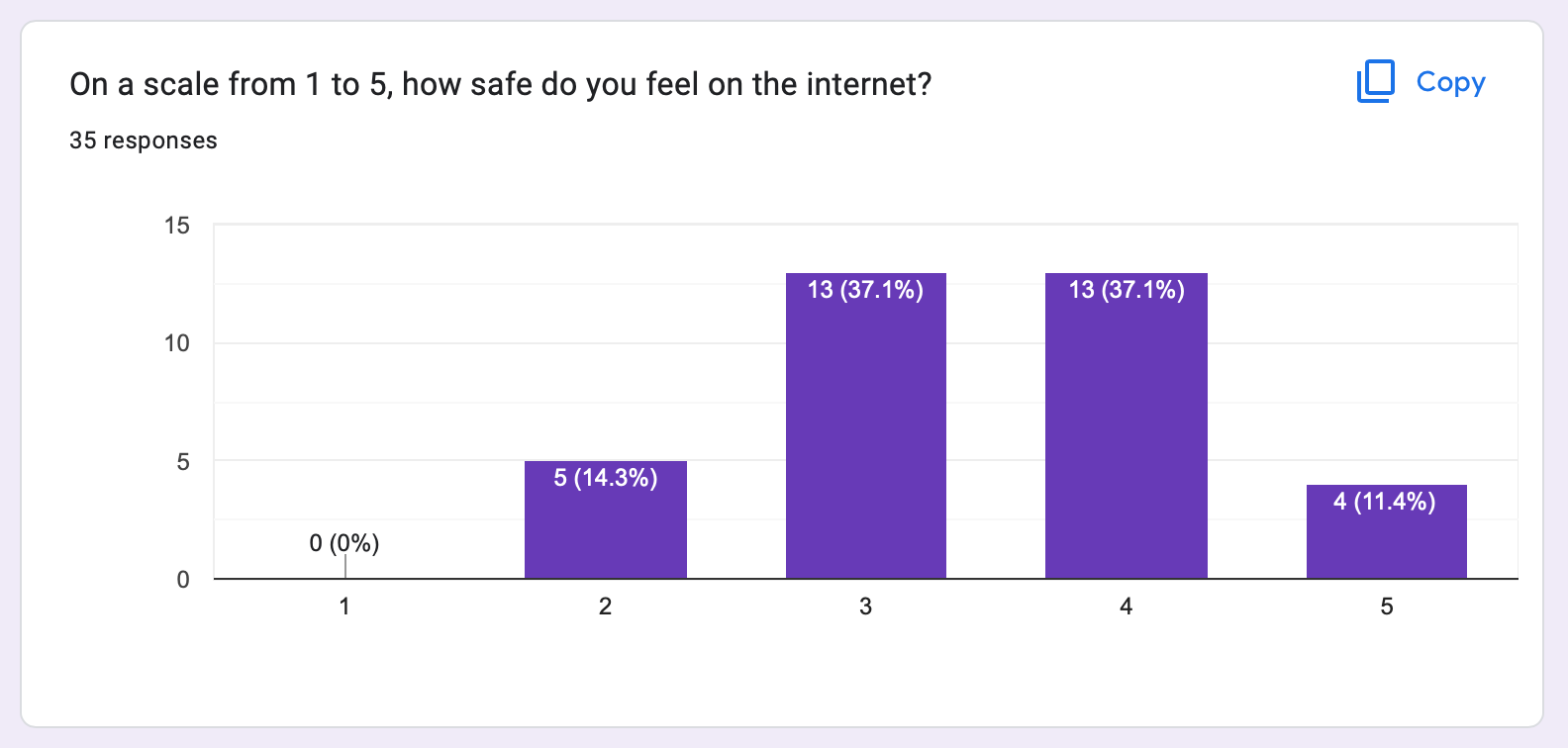
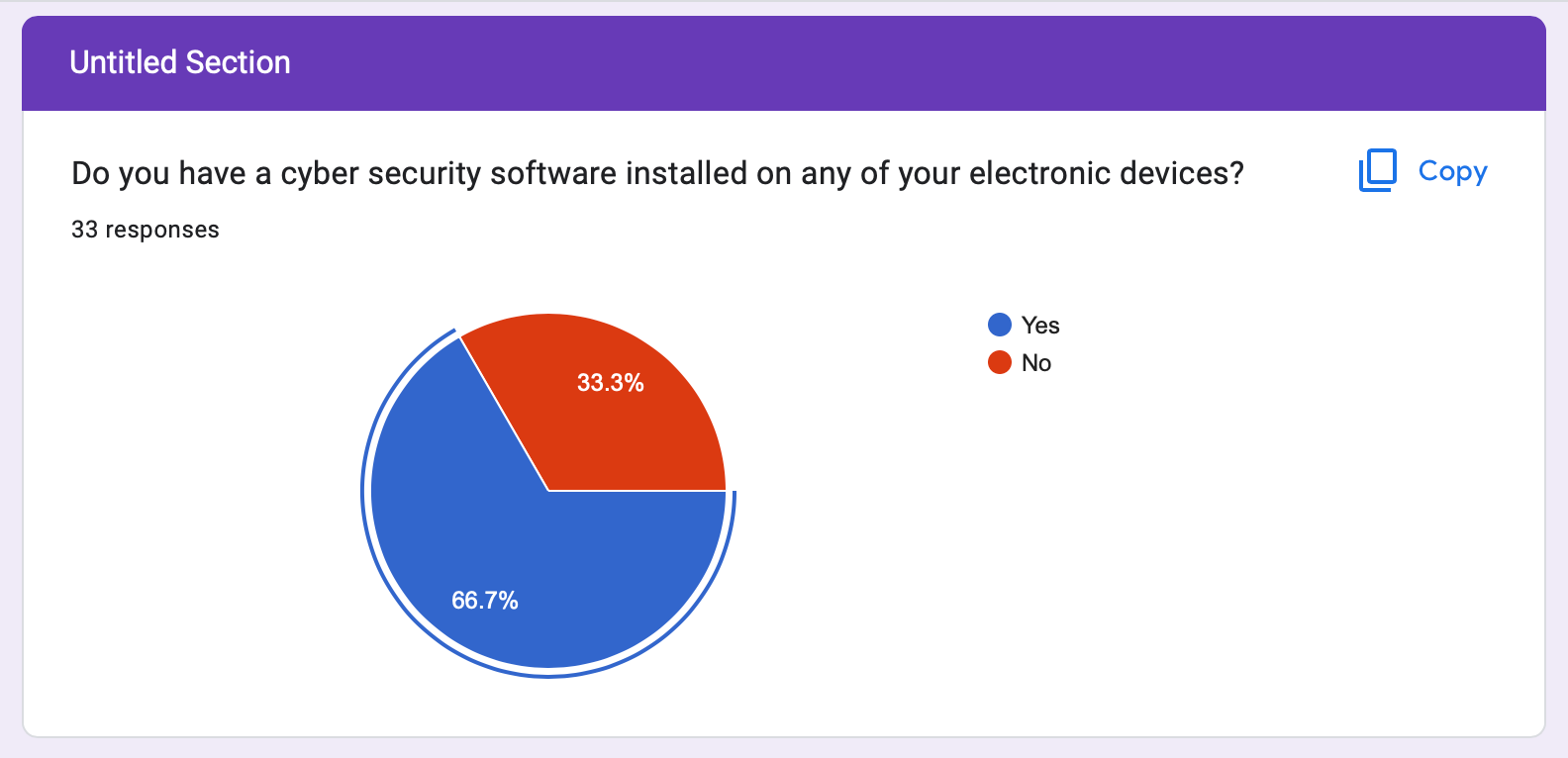
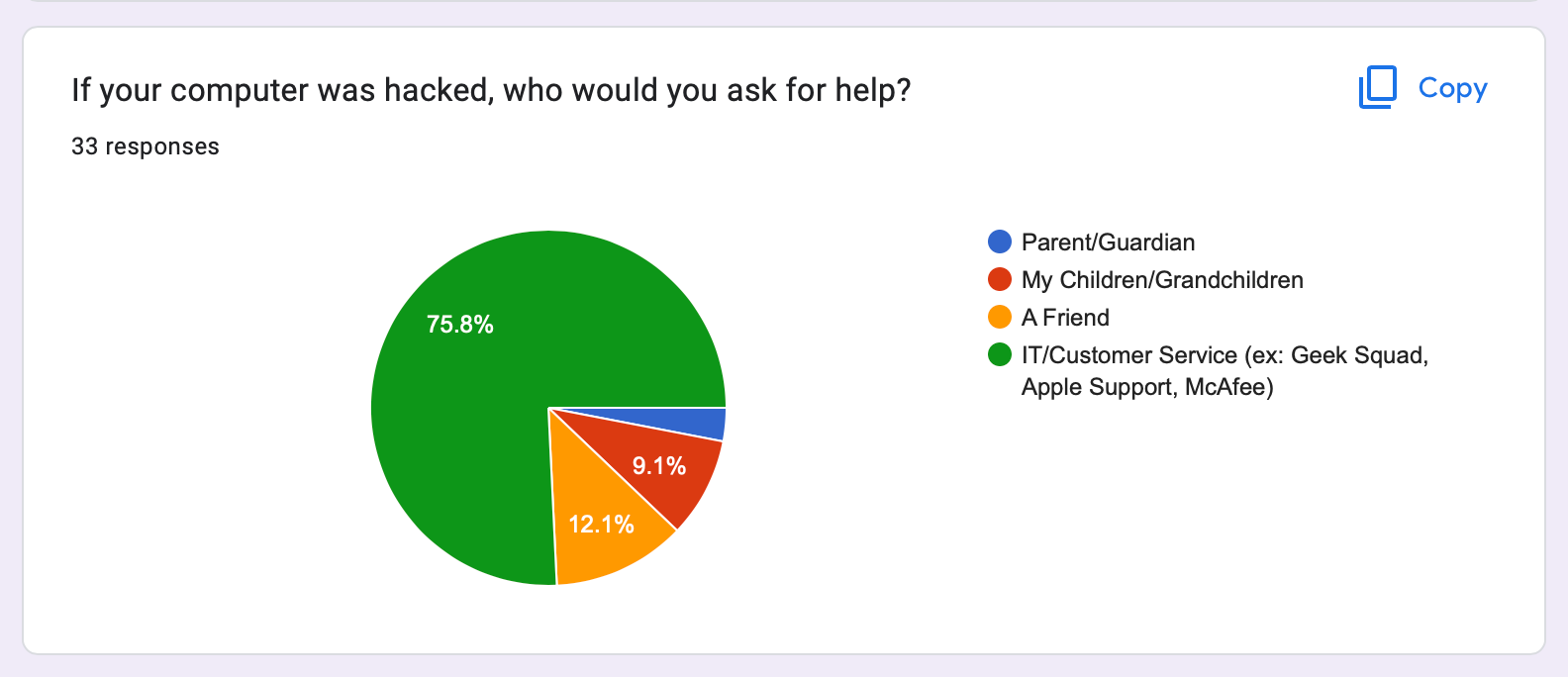
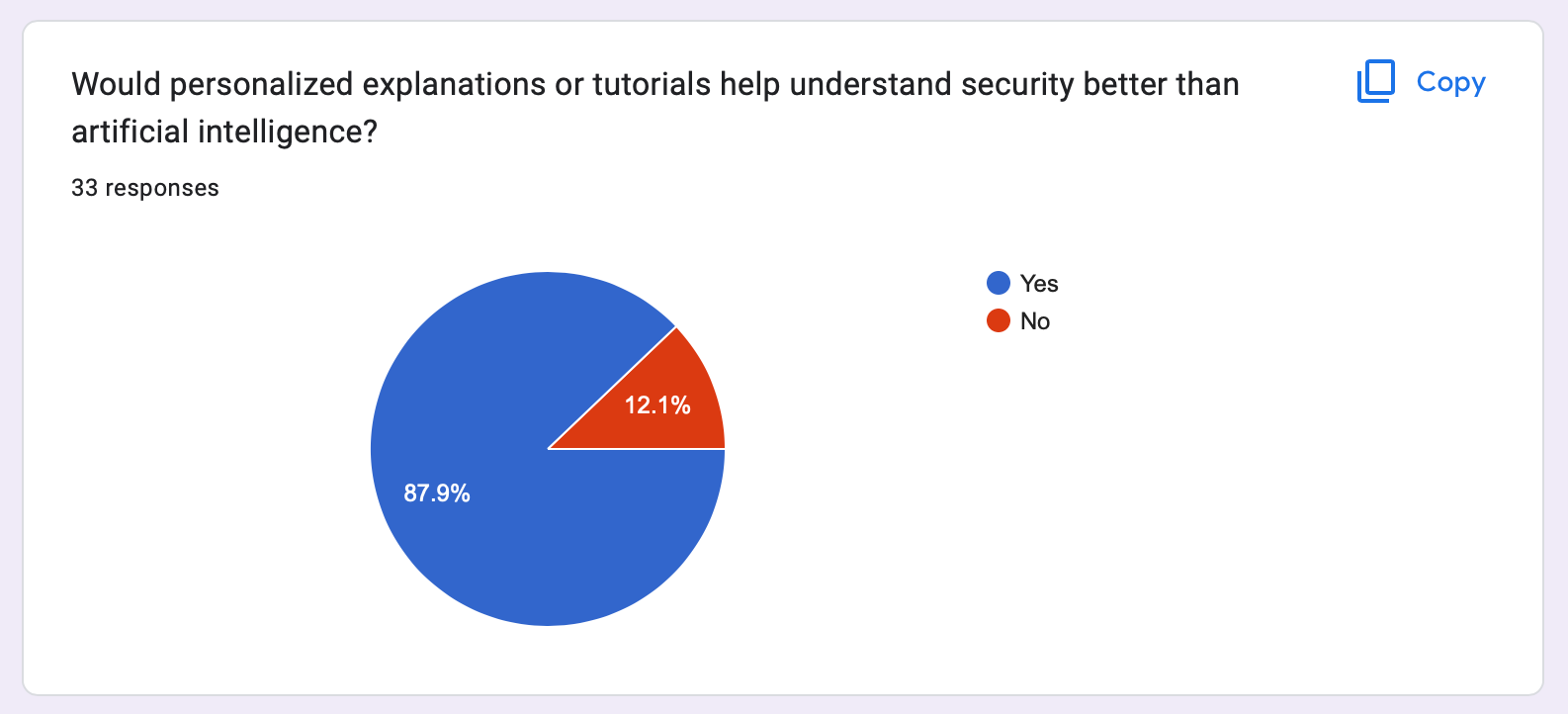
User Personas
From our research, we noticed that there was a spectrum of people who were familiar with the concept of cybersecurity, and yet, they were either acutely aware of their safety or it was the last thing on their mind. Also, there was also a small group of people who were not familiar with the term, "cybersecurity," and they were concerned about their internet safety.
Mark is someone who cares about his internet safety. He is very familiar with cybersecurity, and he has a security software installed on his devices. His mother, Betty, isn't too familiar with cybersecurity, yet she is still fearful of the dangerous scams of the internet. His daughter, Maddie, is always keeping with the latest trends online, and cybersecurity is the last thing he is thinking about. With the rise in internet scams during the pandemic, Mark is searching for a security software that allows him to protect his family and focus his energy on other important matters.
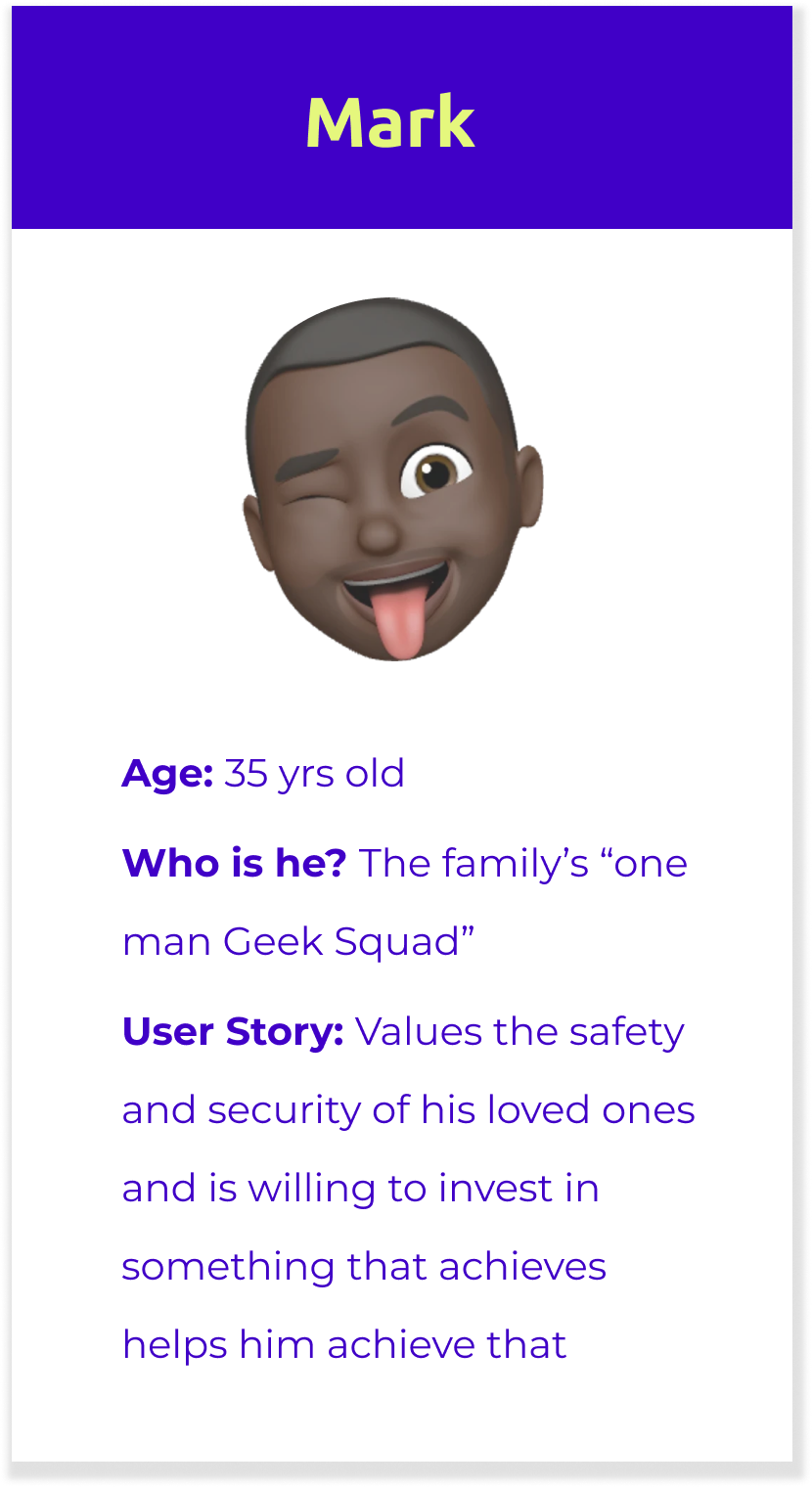
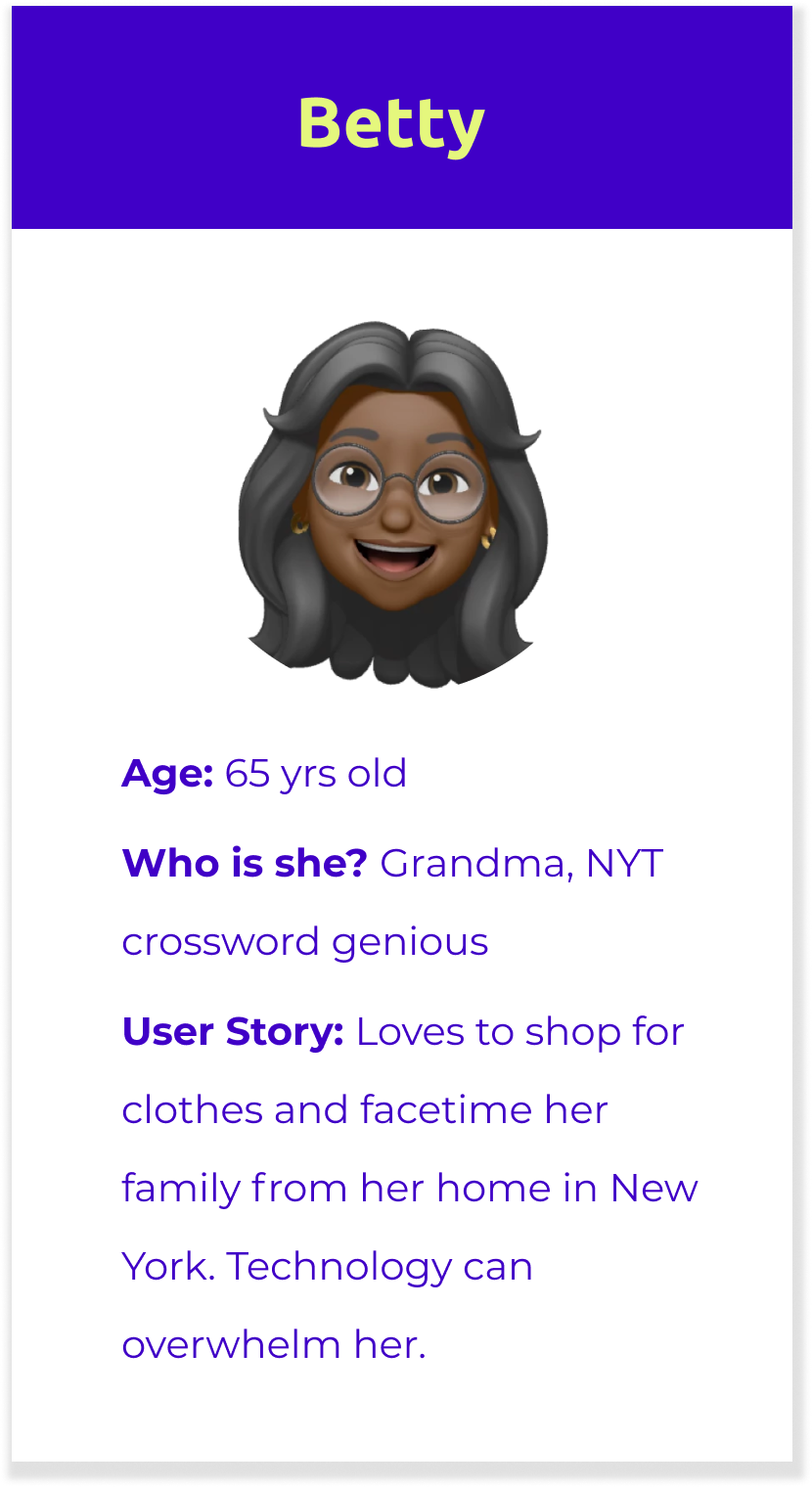
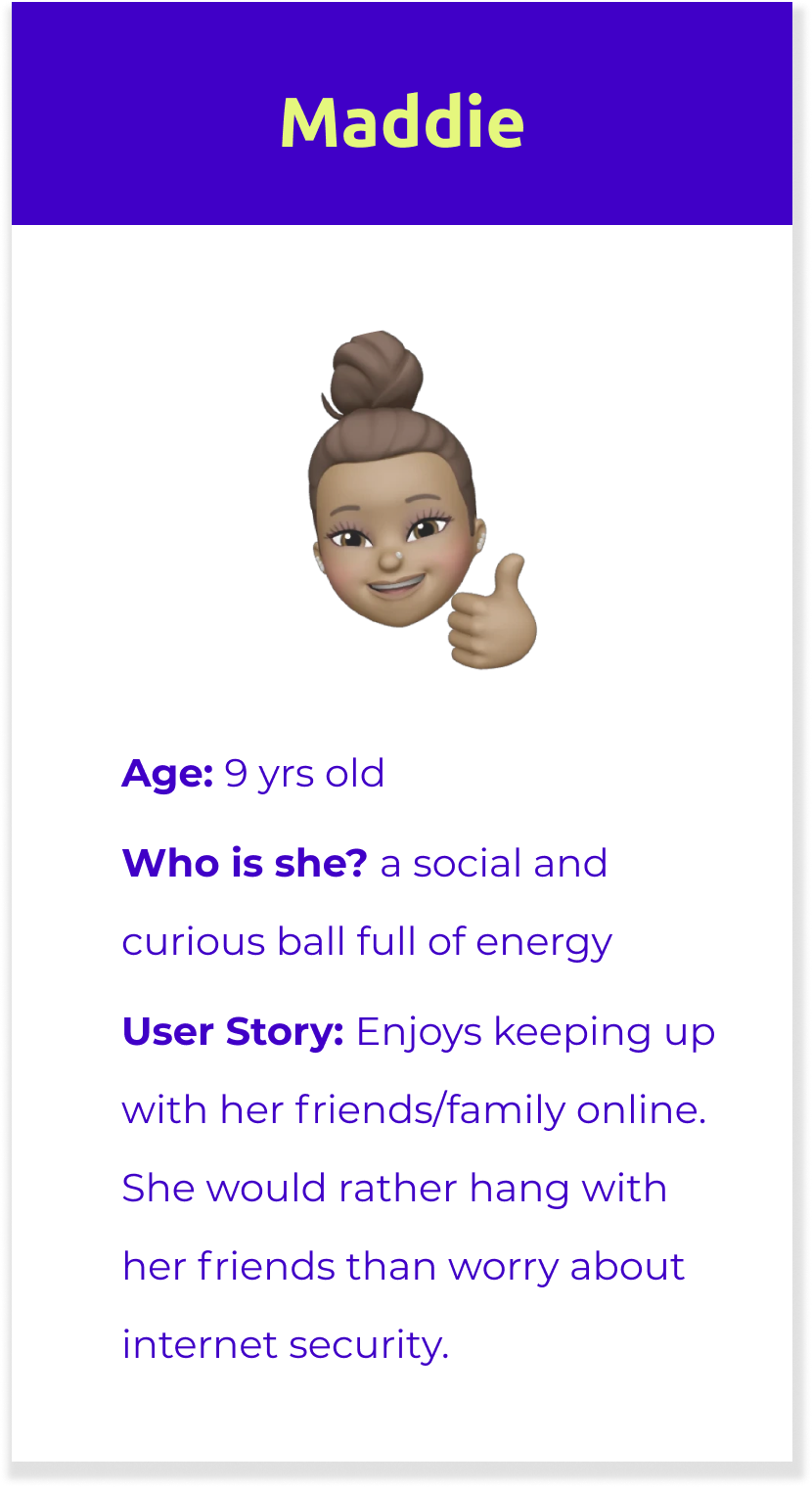
Our Solution
In an increasingly digitally world, Malwarebytes reminds us to leave no one behind.
Malwarebytes' app allows family and friends to monitor their internet security together, with consistent updates, personalized recommendations, and easy to use features.
Based on our insights, we knew that we should create a digital experience that empowers our users to make informed decisions when it relates to cyber-related issues through real time, personalized recommendations and human connection.
Users would be able to sign up for a cybersecurity protection subscription through Malwarebytes' app. The host of the subscription can add friends or family members to the plan, from their children to their roommate.
For a user who very much cares about the internet protection of themselves and others, there is a safety in knowing that Malwarebytes gives them the ability to monitor the safety of everyone on their plan. For the user who could care less about their internet safety, they are guaranteed safety with the help of Malwarebytes' and their families/friends.
Ideation & Exploration
User Map
Joining the Fam Bam Package, the family subscription, would unlock a variety of features within the app, such as a real time chat option between family and IT professionals, a dashboard with detailed alerts and threat notifications, and personalized “byte” reports in response to certain security situations.
Visual Identity
Inspired by Malwarebyte's existing brand guideline, we decided to introduce new colors that were friendly, approachable, and calming. As we researched other cybersecurity competitors, we noticed that many of the competitors used frightening, alarming colors and futuristic, Matrix-style imagery, furthering the distance and fear that many might have toward cybersecurity. Also, I illustrated material icons and customizable personality tabs that create a sense of familiarity and individualization.
Key Features
01. Dashboard Variations
As we talked through the responses we received from our survey, we realized that there was a spectrum of people who either were aware of cybersecurity or they were not familiar with the term. Some people were considered their internet safety a priority while others rarely thought about it. We decided to create three variations of the dashboard that meet the needs of users that fall under different skill levels, which are illustrated through our user personas.
For Mark, the One-Man Geek Squad-
He has the ability to view the status of his loved ones on his dashboard. As someone who puts a high priority on internet safety, he has peace of mind knowing that he has access to regular updates on everyone's activity.
For Betty, Our NYT Crossword Genius-
Betty's screen shows the basics. She has access to her real-time notifications, risk activity, and on-call help. She doesn't have to worry about the extra stuff.
For Maddie, the social ball of energy-
Maddie would rather make Tik-Toks with her friends than worry about cybersecurity. With a stripped down screen, Maddie can have fun, knowing that her dad, Mark, is handling the hard stuff.
02. Real-time Notifications
When a safety hazard arises, users will receive notifications on their phone indicating the severity of the issue (i.e low level alert=green, mid-level alert=orange, and high-alert=yellow)

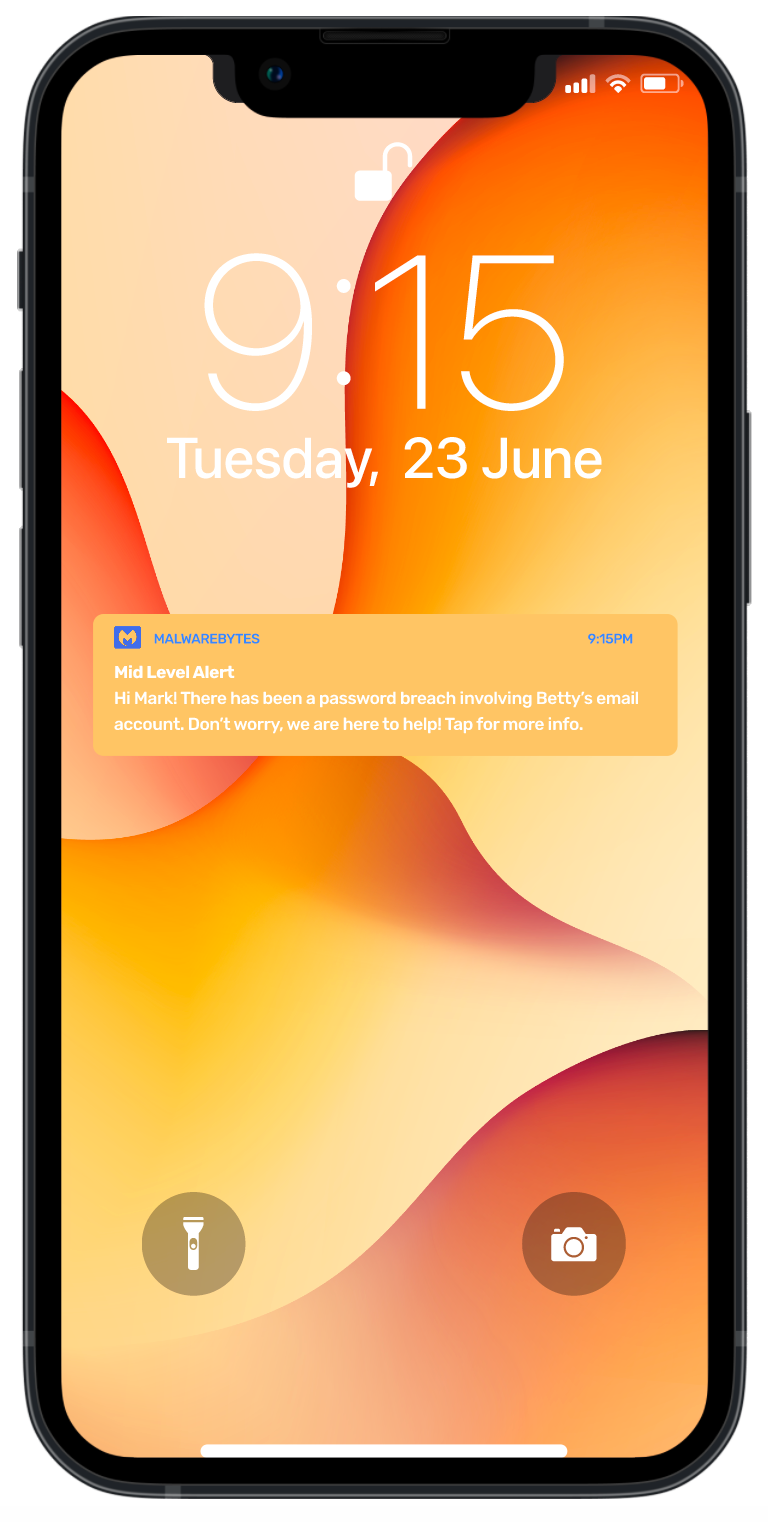

03. Personalized Recommendations
Users receive recommendations that empower them to take action when their internet safety is at risk.
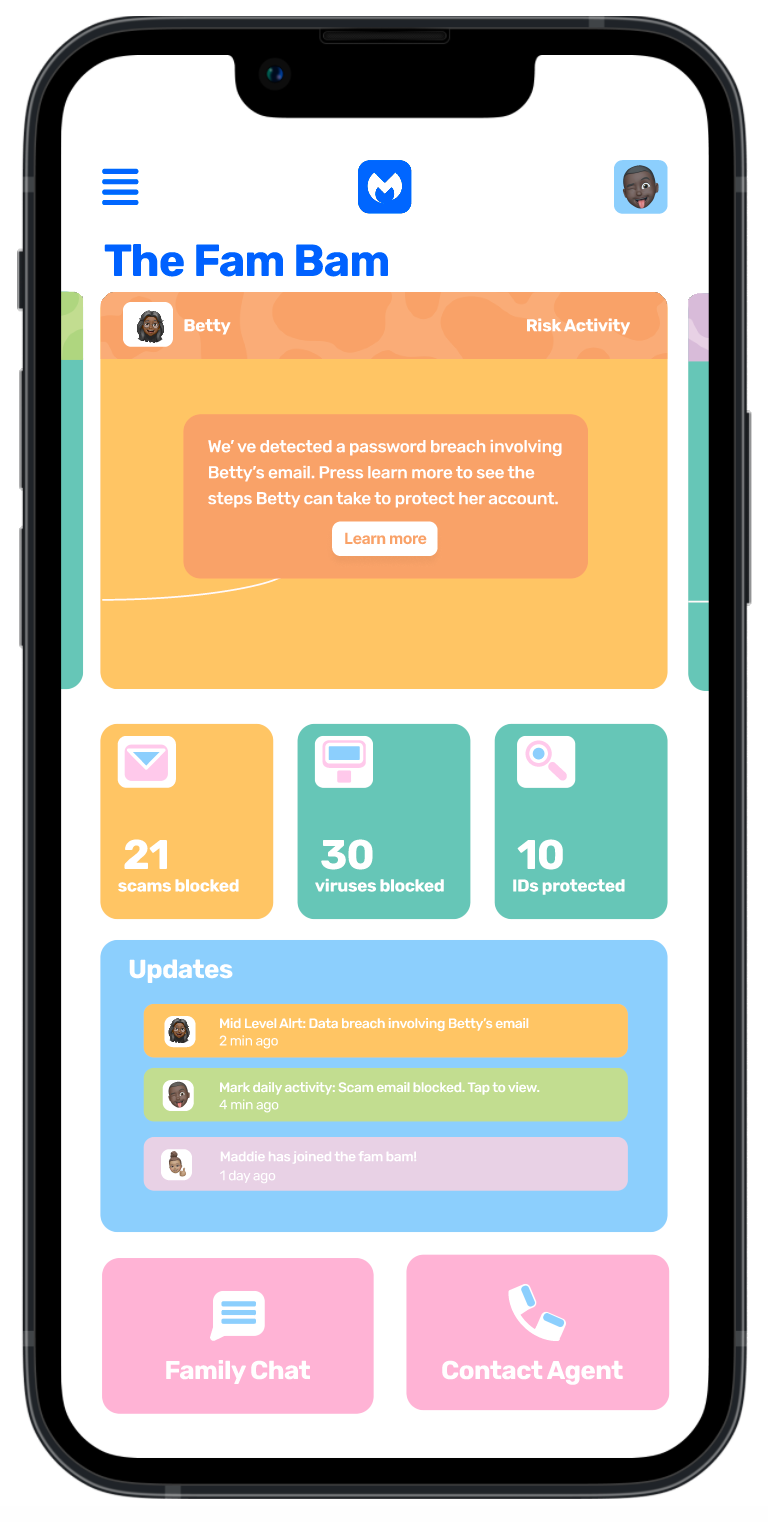
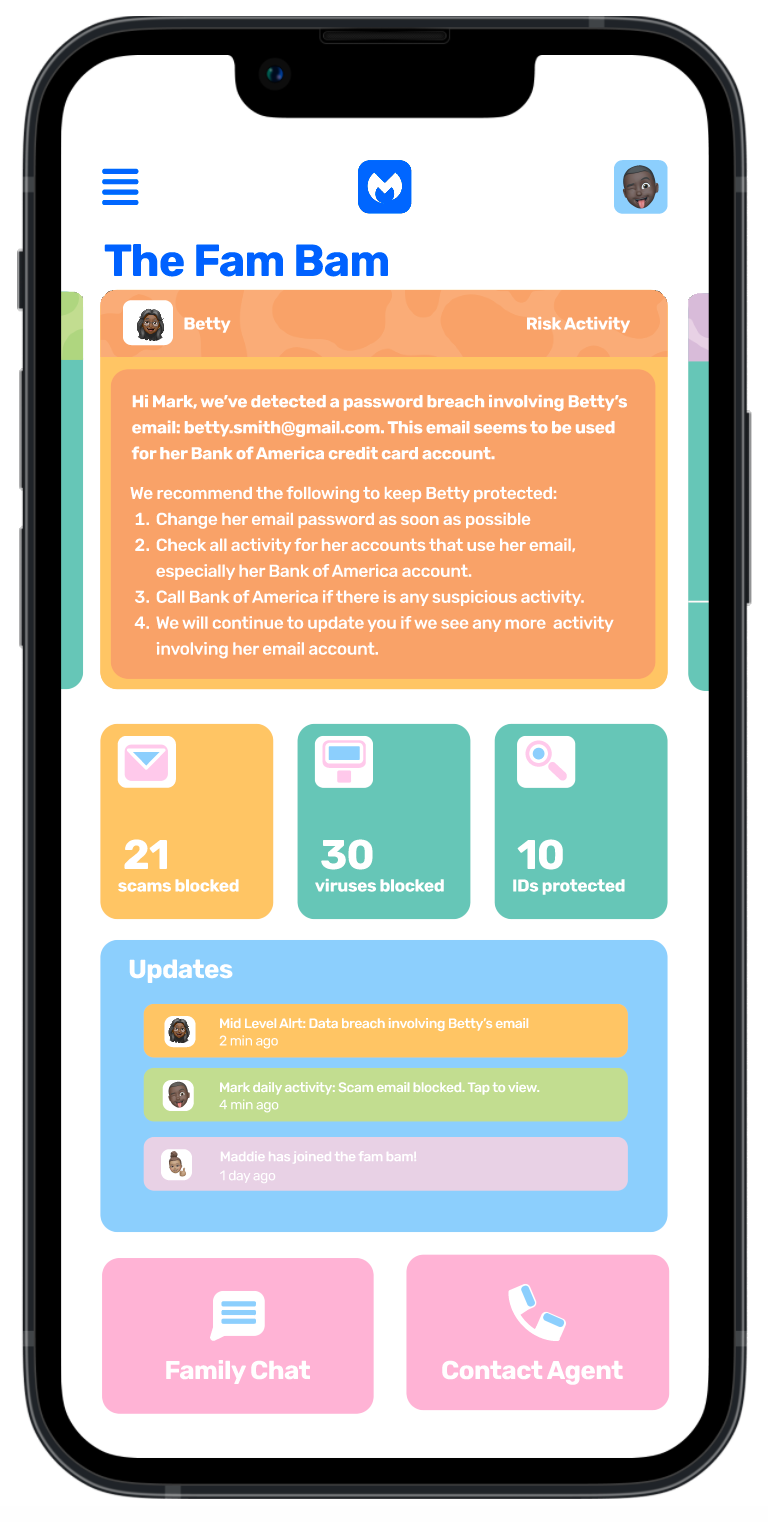
User Walkthroughs
Low-Level Alert: "Dad, My instagram is being weird!"
How it works: Mark, receives a low-level alert that his daughter, Maddie, has received an email scam from someone impersonating Instagram. He is prescribed a personalized solution on his dashboard that directs him to message Maddie.
Why: The app's personalized, real-time recommendations prevents the problem before it happens.
Mid-Level Alert: "Wait a minute? What is this purchase on my bank statement?"
How it works: Mark receives a mid-level alert that Betty's email was involved in a password breach attached to her credit card company. As the app continues to monitor the situation, he receives a list of solutions that he can talk to his mother about.
Why: The user is educated and informed about the date breach as soon as possible. The solutions are readily available to share with others in the family.
High Level Alert: "What in the heck is this?!"
How it works: Mark receives a high-level alert that his personal information was spotted on the dark web. He receives a personalized report detailing the issue with the option to talk to a representative.
Why: The user receives a detailed report as a response to the severity of the scam, alleviating time, energy, and stress. The user has easy access to an IT representative through a video call.
